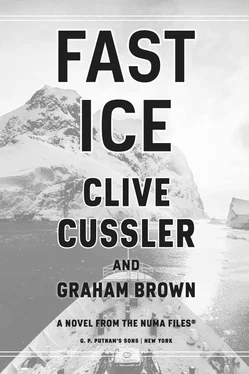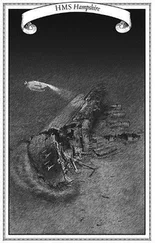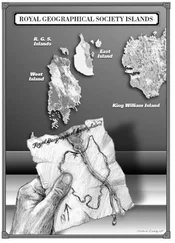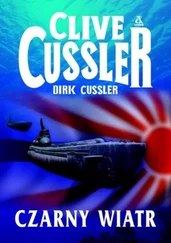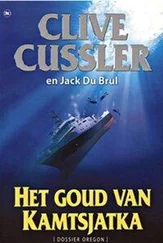Kurt nodded.
“They left camp three weeks early, in the middle of the night, hoping to shake whoever was watching them,” Rudi added. “She insisted she’d contact us once she reached Cape Town. Obviously, she never made it.”
Kurt set his jaw. The details only made it worse. “You might have shared that message with me. We could have offered some help, given her some protection. We could have met her down on the ice and escorted her back home.”
Rudi looked across the table at Kurt. Despite the tension between them, there was still the utmost respect. “Believe me, Kurt, if I had any idea where she was—even the slightest clue—I’d have sent you out there nine weeks ago. But she didn’t share that information with me.”
Kurt nodded. He appreciated the words. He took another look at the photo. “What did the infrared cameras show?”
“That the ship is cold,” Rudi said. “Very cold. Engines must be off. Battery likely drained. There’s a small heat plume discernible at the top of the superstructure, but the rest of the ship is at the same temperature as the background. That’s part of the reason it was so hard to find. Every automated scan passed over the ship as if it were another iceberg. We had to find this the old-fashioned way.”
“What’s causing the heat plume?” Joe asked.
“Hard to tell,” Rudi said. “Our best guess is solar panels on top of the superstructure that might still be functioning.”
“So, they have electricity, but no lights, no radio calls, no distress beacon.”
Rudi nodded. “Which means there’s no one on board to use that electricity or there’s no working equipment to do anything with it.”
Kurt was less downhearted. Electricity meant heat and heat meant life. “Do we have any ships in the area?”
“The Providence is the nearest vessel,” Rudi said. “She’s a Class 1 survey ship studying deepwater currents. She’s currently about fifteen hundred miles away. Close enough that she could be within helicopter range by the time you two get there.”
Kurt stood up. He knew the drill. There would be a plane waiting for him and Joe at Dulles International. “We’ll grab our things.”
Rudi stopped him. “I know we haven’t always seen eye to eye on Cora, but she was one of ours.”
Kurt felt the same way. “I’ll bring her home if I can.”
“And if you can’t,” Rudi added, “then I want to know what happened to her. And who was responsible.”
5
BASE ZERO
HOLTZMAN GLACIER, QUEEN MAUD LAND, ANTARCTICA
A series of small buildings lay half buried in the snow at the edge of the Holtzman Glacier. Painted a dull white, with mushroom-shaped roofs, they linked to one another and blended in with their surroundings, appearing almost invisible from overhead. The only real indication that a settlement existed in the area came from the trenches in the snow linking the habitat to structures out and away from the central hub.
The trenches hadn’t always been necessary, but ten feet of snow had built up around the outpost in the months since it was set up. Ironically, the piles were not a result of storms dumping frozen precipitation from the sky. The air over Antarctica was so dry that it actually snowed very little there, no more than five inches per year at this location. But because the temperatures remained frigid year-round, what did fall never melted. Instead, it piled up, blowing about in endless drifts.
As strong winds swept across the continent, they scoured the landscape like currents in the ocean. Certain areas were laid bare, offering oasis-like spots of raw land. Others received the excess, with drifts piling higher and higher until anything on the surface was buried, entombed and forgotten.
Base Zero sat in one of those areas and would have a short lifetime on the surface. It had survived the Antarctic summer but would be lost by the end of winter, hidden by the blowing snowdrifts. The men and women who’d put the base together knew this all too well. In fact, they were counting on it.
Unlike the international scientists who had constructed their buildings on platforms that could be raised up each winter or spring, the builders of Base Zero fully intended their habitat to vanish and never be found.
And while most of them would be happy to say good-bye to the cramped little outpost, a lean figure whose subordinates called her the Ice Queen would be sad to see it go.
Where else could I find such silence? Such pristine air and calming solitude?
Leaving this place meant going back to a crowded, dusty world. One that would grow worse with every passing day unless someone altered the trajectory.
She left the main building and entered a trench that led from the habitat across to the nearby glacier. With goggles to protect her eyes, a heavy scarf wrapped around her face and a thick, multilayered cap covering her head and ears, she looked as if she belonged in Aspen or St. Moritz. All that could be seen of her was the tip of her pointed nose and a few wisps of blond hair poking out from beneath the hat.
Arriving at a Y-shaped junction, she branched to the left. The path began sloping upward until it let her out in the middle of the frozen plain.
The snow around her was glistening under the noontime sun. Scalloped drifts ran off in every direction, while mountainous terrain could be seen in the distance beyond. Twelve hundred miles past that mountain lay the southern geographic pole, the very bottom of the world. Fortunately, her destination was much closer—a small drilling rig painted white and shielded by canvas tarps to disguise it from prying eyes. She walked toward it, stopping only when her satellite phone buzzed.
Reaching under the hem of her coat, she grasped the phone with her gloved hand and slid it from its holster. A code indicated the caller’s identification, but checking it was just a formality. There was only one person who would be contacting her.
Pulling the scarf away from her mouth, she answered. “Your call is early. I’m not due to report until this afternoon.”
“My call is early,” a male voice insisted, “because problems don’t arrive on a schedule.”
“You’re saying we have a problem?”
“We do,” he said. “Or we will. Very soon.”
“What are you talking about?”
“I’m talking about your friend Cora and her old associates in NUMA,” the voice said bluntly. “I warned you about her. I told you she would never become one of us.”
The blond woman shook her head. “We needed Cora. She led us to what we were after. And I alerted you the moment she betrayed us by contacting NUMA. Now she’s dead. And I’ve seen nothing to suggest NUMA tried to respond to her message.”
“What you haven’t seen I have,” the man insisted. “One of their ships has made a sudden change of course. After weeks of leisurely operations in South African waters, it’s now plowing through the sea at high speed, heading almost due south.”
This was not good news. “Is it coming our way?”
“No.”
“Then we have nothing to worry about.”
“How I wish that were true,” he said. “I’ve extrapolated their course and discovered their destination. They’re heading for the Grishka .”
“Impossible,” she replied. “That ship is at the bottom of the sea.”
“Yet again,” he said. “How I wish the facts matched your confident assertions. You sent the Grishka on a westward course, did you not?”
“Away from us,” she said. “We wanted to make sure it was farther from the bay and our area of operations when it went down. Just in case an emergency beacon we hadn’t accounted for went off. That way, if anyone came looking for it, they would be out beyond the horizon.”
Читать дальше
